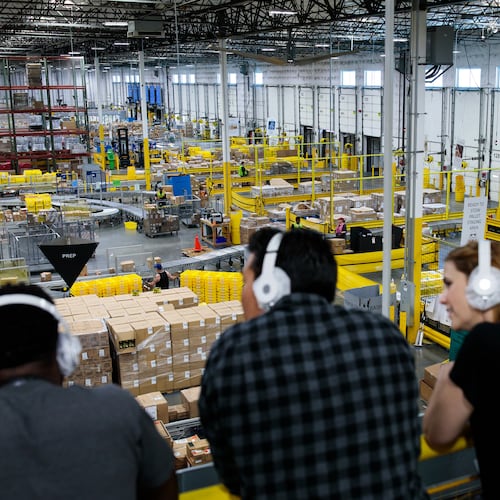Expandable polystyrene foam cups, sometimes mistakenly referred to by the brand name "Styrofoam," have acquired a reputation among some Americans as a bane of the environment.
Every year, millions of cups end up in the water, making their way into fish stomachs or to a massive vortex of trash in the Pacific Ocean. Others end up in landfills, where they take hundreds of years to break down. Outside of California, few facilities recycle them.
Now, Stone Mountain-based New Wincup Holdings Inc. has created what is believed to be the first expandable polystyrene foam cup that biodegrades in active landfills. It's looking for environmentally-attuned customers for its "Vio" brand, which is 30-40 percent more expensive than a standard cup.
Polystyrene cups have acquired a bad reputation over the years "as a product that does not go anywhere and just hangs around," said Fran Alexay, Wincup's director of marketing. "There is a big trend towards environmentally green disposables."
Polystyrene has become one of the world's most common packaging materials for several reasons. It's durable, for one. It's functional -- a foam cup doesn't heat up in your hand when filled with hot coffee, for example. And it's up to 80 percent cheaper than paper at wholesale, according to the American Chemistry Council.
But that ubiquity comes with a price. The Environmental Protection Agency estimates that less than 1 percent of the 2.47 million tons of polystyrene generated in 2009 were recovered for recycling.
The landfill is where Wincup spotted an opportunity about a year and a half ago, when it started developing Vio.
"We have created a new end of life story" for foam cups, said George Wurtz, chief executive of Wincup. The company employs about 900 people around the United States and can churn out 4.2 million cups a day at its Stone Mountain facility alone.
There are threats to the industry. A variety of companies, including sports teams and big caterers, are trying to transition away from polystyrene cups, possibly by buying hot cups made with paper instead of plastic.
Earlier this month, in a ruling that focused on workers in manufacturing environments, the U.S. Department of Health and Human Services said styrene can be "reasonably anticipated" to cause cancer in humans. The chemical is used to create insulation, carpet backing, fiberglass and food containers. The U.S. styrene industry said it would vigorously contest the ruling.
Styrene may leach from polystyrene containers used for food products, but the levels of styrene are very low, according to the National Toxicology Program.
Staci McTeigue, a paralegal in Atlanta, tries to avoid polystyrene. "It's just wasteful, as are all disposable plates, cups, utensils," she said. "I bring my own everything just about everywhere I go, within reason. I can't predict every situation."
Wincup's new cups look like standard white foam cups, but biodegraded an average of 14.2 percent in the first 133 days of testing under conditions that simulated a biologically active landfill, thanks to an additive that interacts with micro-organisms. At that rate, the cup would degrade entirely in three to five years, according to the company.
Wincup is working to develop a recycled polystyrene cup. In the meantime, it says Vio optimizes a plastic cup's typical waste stream, which usually ends in the landfill. In an effort to discourage littering, the company points out that the cups will not biodegrade outside of the wet environs of active landfills.
Critics point out that the chemicals in the Vio cup won't actually disappear from the environment once it biodegrades. A better goal, they say, would be "compostability" -- the ability to eventually turn the cup into dirt.
"Essentially, you have something that's still made of plastic," said Darby Hoover, senior resource specialist with the Natural Resources Defense Council. "From an environmental point of view, and from a health point of view, this is not actually a step forward. Biodegradability is a pretty dubious distinction in the first place."
Miriam Gordon, California director of Washington, D.C.-based Clean Water Action, echoed that sentiment.
"Plastic persists for such a long time that scientists have not been able to document its disappearance," she said. "We have no idea how long they stick around...They may degrade into smaller and smaller pieces, but it just degrading into smaller pieces of plastic."
About the Author
Keep Reading
The Latest
Featured


